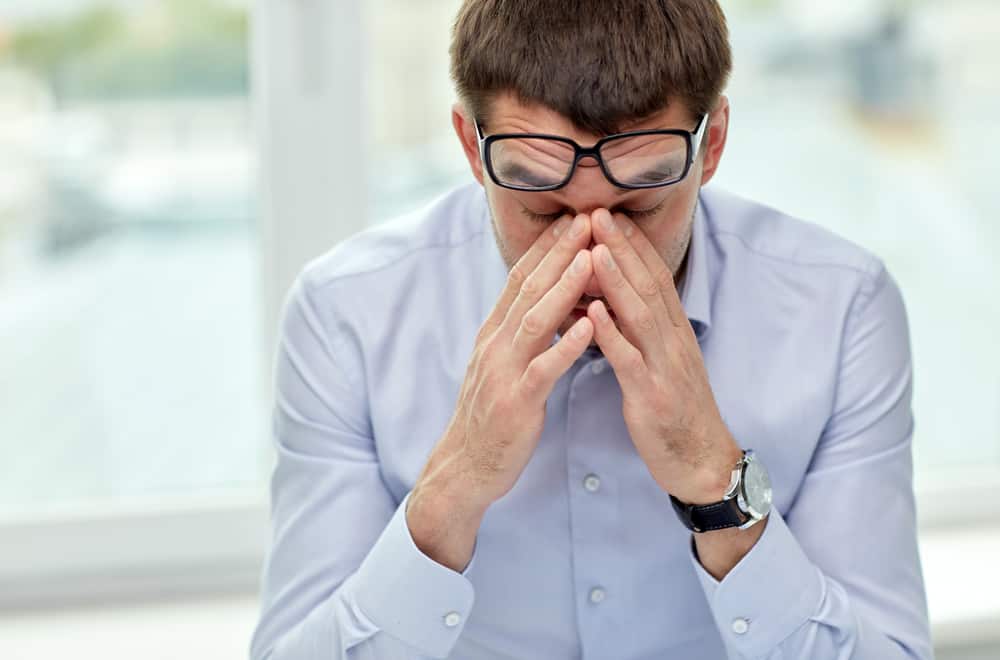What Is Anxiety?
We all experience worry and apprehensiveness at times in life, which generally dissipates as a situation subsides. Circumstances that may induce a reasonable level of worry or concern include sitting an exam, attending a job interview, public speaking, personal health matters, caring for an ill family member or moving house. In most cases, such worry or concern is considered normal and will disappear in due time.
Anxiety on the other hand is characterised by chronic unease, apprehensiveness or concern, and can largely disrupt a person’s ability to go about their day as normal. The cause(s) of this common mental health illness for one individual may differ to those of the next, and may include family or personality factors, medical factors (e.g. physical or mental health illness) and/or environmental factors (including ongoing stress, trauma or lifestyle). For more information on the many causes of anxiety, please read our article ‘What Causes Anxiety?’ by clicking here.
Anxiety may present itself in a number of forms, including:
- Generalised Anxiety Disorder (GAD)
- Panic Disorder
- Social Anxiety (or Social Phobia)
- Specific Phobias
- Post-Traumatic Stress Disorder (PTSD) and
- Obsessive Compulsive Disorder (commonly referred to as ‘OCD’).
It is not uncommon to suffer from more than one of the above-mentioned types of anxiety at the same time, and many people who are experiencing anxiety may be simultaneously suffering from depression.
Common Signs and Symptoms Of Anxiety
Despite whichever (one or more) anxiety disorder a person is experiencing, a number of common signs and symptoms exist. These symptoms may be physical, psychological/emotional and behavioural in nature.
Physical
Physical signs and symptoms of anxiety may include a racing heart, heart palpitations and/or shortness of breath. When anxious, a person may experience tightness in their chest and/or throat and have difficulty swallowing. Anxiety can ignite shaking and trembling, as well as hot or cold flushes and excessive perspiration. When anxiety strikes, a sufferer may experience dizziness/light-headedness and numbness or tingling.
Headaches alongside muscle tension or pain may be prevalent when anxiety occurs, as well as a nervous or upset stomach and potentially nausea and/or vomiting. Frequent urination or diarrhoea can affect anxiety sufferers, in addition to exhaustion (as a result of chronic worry), restlessness and/or difficulty sleeping. Some anxiety sufferers will also experience panic attacks (i.e. the sudden onset of intense fear followed by symptoms including increased heart rate, shortness of breath, sweating and/or trembling).
Psychological and Emotional
Alongside excessive worry and fear and a sense of impending doom, psychological signs and symptoms of anxiety may include difficulty concentrating on a single task, memory troubles and obsessive thinking. Anxiety sufferers may also experience racing thoughts and/or catastrophise (i.e. think about the worst possible outcome of a particular situation in your mind).
Emotional signs of anxiety include nervousness, apprehension, uneasiness, distress, agitation and dread, in addition to feeling overwhelmed, hopeless or powerless.
Behavioural
Behavioural signs and symptoms of anxiety include avoiding or escaping from certain places (e.g. school, university or work) or situations that induce anxiety (e.g. using public transport or attending a social event). A person suffering from anxiety may avoid seeing specific people or attending certain appointments.
Anxiety sufferers may adopt an especially cautious approach to regular, day-to-day activities and constantly be on the alert for harm or danger. Fear of separation from certain people (such as their partner, parents or children) may also be a problem for a person struggling with anxiety on a regular basis. In some cases, substance abuse may become an issue whereby an anxiety sufferer tries to drown out their symptoms by means of heavy drinking or using drugs.
Common Types of Anxiety Disorders
Generalised Anxiety Disorder
Generalised Anxiety Disorder (GAD) is characterised by persistent, irrational and uncontrollable mental and/or physical anxiety about a variety of different everyday things, including health, family, finances, work and friendships. This excessive worry and constantly feeling “on edge” in everyday situations can largely impact a person’s ability to go about their daily activities as normal, such as attending appointments, socialising with friends and family, attending school/university/work, running errands and/or completing necessary household tasks.
A person suffering from Generalised Anxiety Disorder’s anxiety may appear without a specific, identifiable cause (i.e. you may feel anxious for no apparent reason), and they may fear something terrible will happen even where there is no clear and understandable reason to feel this way. GAD can cause a person to often seek reassurance from others that their irrational fears will not eventuate.
Signs and symptoms of GAD can vary from one person to another and may include a mix of physical, psychological/emotional and behavioural symptoms, as outlined in the beginning of this article.
Panic Disorder
A person who suffers from regular panic attacks (i.e. sudden periods of overwhelming and intense fear, terror, panic or doom, accompanied by symptoms such as increased heart rate, shortness of breath, sweating and/or shaking) is likely to be suffering from what is referred to as Panic Disorder.
Most often, the intense fear and panic that present themselves when a panic attack occurs appear very suddenly and without an identifiable trigger. A feeling of immediate threat or as though you are experiencing a heart attack, going to die or are going mad/losing control are not uncommon symptoms of a panic attack. A panic attack in most cases lasts for approximately ten minutes, however, symptoms are both intense and severe, and may include a heightened heart rate, palpitations, shortness of breath/a choking feeling, chest or throat tightness, trouble swallowing, shaking or trembling, hot or cold flushes, heavy perspiration, dizziness or feeling light-headed, numbness and/or tingling, nausea and detachment from yourself or the current situation (otherwise referred to as ‘depersonalisation’ or ‘derealisation’).
Despite the fact a panic attack and its associated symptoms do not last particularly long, the fear and apprehension as to when the next one will occur can prevent a person from going about their normal activities comfortably and happily. Similarly, many people who suffer from panic attacks may fear they have a serious health problem and undergo repeated medical testing (despite receiving reassurance from others).
Social Anxiety (or Social Phobia)
Nervousness experienced before or during particular social situations from time to time (when we come under the direct attention of others) is not uncommon and is quite a normal sensation e.g. when delivering a speech. However, for sufferers of Social Anxiety (otherwise known as Social Phobia), both general day-to-day and specific social situations can ignite intense and irrational feelings of fear and anxiety.
A person suffering from social anxiety is fearful of doing or saying the wrong thing in front of others as well as being on the receiving end of humiliation, criticism, scrutiny or negative judgment from others. It is not uncommon for someone with social anxiety to feel distressed, humiliated, embarrassed, inferior and/or depressed following a difficult social interaction, and physical symptoms of their social anxiety experienced during the interaction can further fuel their anxiety. Some sufferers of social anxiety feel anxious regarding a certain type of social interaction, whereas others may be fearful of a variety of social situations.
There are a number of potential causes that contribute to the development of social anxiety, including a variety of personal factors (e.g. family history, personality/temperament) and environmental factors (e.g. acquired behaviour/response, negative thinking patterns and avoidance of social situations). For more information on the causes of social anxiety, please check out our article ‘Social Anxiety – Part One: What Causes Social Anxiety?’ by clicking here.
Intense social anxiety may cause a person to avoid some or in more extreme cases, all social situations. As a result, social anxiety can negatively impact a person’s relationships with other people and potentially their work life as well.
Social Situations That May Induce Social Anxiety
A wide variety of social situations can induce social anxiety including job interviews, formal events, making a presentation, public speaking and performing. A person with social anxiety may be apprehensive regarding attending parties, events or social gatherings with friends and/or family or appointments, work, school and/or university. Using public facilities (e.g. transport) and completing everyday activities such as speaking, eating or drinking under the watch or observation of others may also ignite major anxiety. Meeting new people, being introduced to people of authority or conducting small talk can ignite feelings of social anxiety in some people.
Additionally, situations in which you are the centre of others’ attention (for example, on your birthday), are required to demonstrate an activity requiring skill or to give your opinion or decision may be very challenging for a person with social anxiety. In particular, being the subject of teasing or criticism can be especially difficult.
On top of the symptoms of anxiety discussed in the beginning of this article, a person suffering from social anxiety may also experience some or all of the following additional symptoms of social anxiety, whether they be physical, emotional or behavioural in nature.
Physical Symptoms Of Social Anxiety
A person struggling with social anxiety may experience an uneasy stomach or a feeling of “butterflies” in anticipation of or during a challenging social interaction. Additionally, feeling nauseous, an increased need to use the bathroom or having diarrhoea may also occur when social anxiety strikes.
It is not uncommon for a person with social anxiety to experience muscle twitches, stammering as well as forgetfulness with regards to what you wish to say or do. Speaking too quietly, feeling shaky when speaking or a trembling voice may also occur. A person who feels socially anxious may have a dry mouth, blush when speaking or when spoken to and at times feel panicked and/or a requirement to escape the situation at hand.
Emotional Symptoms of Social Anxiety
When social anxiety is troubling a person, they may feel embarrassed or humiliated amongst other people, self-conscious and potentially inferior or out of place. It is not uncommon for a person to fear physical symptoms of their social anxiety and in particular, other people noticing these physical symptoms. Social anxiety can cause an individual to feel hypersensitive when exposed to criticism from others, as well as to experience a lack of self-esteem.
Behavioural Symptoms of Social Anxiety
Negative self-talk can trouble a person with social anxiety, as well as regularly expecting the worst possible scenario/consequences of a particular social situation. A socially anxious individual may try to avoid initiating conversation with other people, or in more intense cases, particular social interactions altogether. Feeling pressure to behave a certain way or the “right” way in a particular scenario may be evident, as well as focusing heavily on how you are speaking or acting yourself, as opposed to the conversation at hand or other people taking part in it.
Social anxiety can cause a person to have difficulty being assertive when necessary and instead remain quiet and avoid eye contact. Sitting, standing or moving self-consciously or isolating oneself from others in a social situation may occur when social anxiety makes an impact. Leaving an event before its scheduled conclusion and ruminating or worrying about certain details of a social interaction following its completion (regarding what you said or your body language, for example) are also behavioural symptoms of social anxiety.
Specific Phobias
A Specific Phobia refers to an intense, unreasonable and irrational fear of a certain situation, activity or object that in the majority of cases in fact poses only a minor threat. The anxiety associated with the relevant situation or object (please note, it is possible to have more than one specific phobia) is both persistent and excessive.
A person suffering from a specific phobia is often aware their intense fear is irrational and out of proportion, yet they experience what feels to be an uncontrollable tendency to exaggerate the danger and to imagine the worst possible outcome associated with the situation, activity or object they fear. This intense and irrational fear can affect a person’s day-to-day routine, life and enjoyment when left untreated.
A large variety of specific phobias exist and a person may struggle with more than one specific phobia. Common specific phobias include insects, animals (such as spiders, dogs, birds or snakes), the sight of blood, thunderstorms, open water (i.e. the ocean), heights, flying in an aeroplane, enclosed spaces, elevators, medical procedures (e.g. injections) and hospitals.
When subjected to the situation, activity or object that induces intense and irrational fear (i.e. the stimulus), anxiety levels can skyrocket, bringing on physical symptoms of anxiety and in some cases, specific phobia sufferers may experience a panic attack. In some instances, simply thinking about the feared situation, activity or object can cause intense anxiety and terror.
As a result, the requirement felt to avoid the relevant situation, activity or object can largely impact and restrict a person’s daily life (for example, not venturing outside for a phobia of birds). Specific phobias in some cases interfere with a person’s ability to study, work, run errands and/or maintain family and social relationships.
Where a person is able to or must endure the phobic stimulus, they may have significant trouble concealing their fear (i.e. physical, emotional and behavioural symptoms of anxiety are evident, they may cling to loved ones or other people and/or cry and scream hysterically). Rarely does a person with a specific phobia go their entire lifetime without having it disrupt their life in some way, shape or form.
Post-Traumatic Stress Disorder (PTSD)
Post-Traumatic Stress Disorder (PTSD) is characterised by intense anxiety, stress and fear following experiencing or witnessing a traumatic (such as an extremely violent and/or life-threatening) event. The trauma may be recent or have occurred long ago and may have been experienced by the PTSD sufferer themselves, someone they love or someone nearby to them. Long after the traumatic event is over, a person can continue to feel overwhelmed and experience feelings of terror.
Feeling shocked, fearful, angry, sad or experiencing grief is not uncommon following a traumatic event, and in the majority of cases these feelings fade with solid support from close family and friends. Comparatively, for a person troubled by PTSD, these difficult feelings remain intense and begin to intrusively impact their day-to-day life.
Examples of traumatic events that may bring about Post-Traumatic Stress Disorder include experiencing a life-threatening situation, witnessing death, serious accidents (e.g. vehicle collision), serious injury, physical violence, torture, sexual assault, fire and natural disasters such as cyclones and floods.
Symptoms of Post-Traumatic Stress Disorder
A person suffering from PTSD can experience a wide variety of symptoms. Avoidance of particular thoughts/feelings, people, locations, activities or situations that are related to the traumatic event that occurred and may therefore bring back memories (i.e. triggers) is a prominent symptom of PTSD. Additionally, a person struggling with PTSD may relive the event via regular distressing flashbacks or nightmares of the trauma. As a result, they may experience physical and emotional symptoms of anxiety including panic, a racing heart, trouble breathing and excessive perspiration.
Feeling emotionally numb is not an uncommon symptom of PTSD, including feeling detached from many elements of life, including family, friends, work and activities an individual found enjoyable prior to the traumatic event occurring. Due to an intense fear of danger, some sufferers feel unable to relax, are consistently on high alert and may have trouble sleeping, while other sufferers experience irritability, agitation and angry outbursts.
A person with PTSD may undergo disaster thinking and be pre-occupied by constant thoughts of “what if” scenarios. They may have trouble concentrating and experience hopelessness and helplessness. In some cases, an individual suffering from Post-Traumatic Stress Disorder may try to drown out their recurring and troubling thoughts by consuming excessive amounts of alcohol or via drug use. Some PTSD sufferers may also engage in dangerous or self-destructive activities.
Risk Factors for the Development of Post-Traumatic Stress Disorder
A number of risk factors exist whereby a person’s chance of developing Post-Traumatic Stress Disorder following a traumatic event is increased. A person who is already suffering from a mental health condition or has done so in the past, and/or is lacking support from close family and friends may be at increased risk of suffering from PTSD. Exposure to trauma in the past or being subjected to consistently high levels of stress may also increase an individual’s chance of being troubled by Post-Traumatic Stress Disorder.
A number of PTSD sufferers may suffer from one or more additional mental health illnesses concurrently, commonly depression and/or anxiety.
Obsessive Compulsive Disorder (OCD)
Obsessive Compulsive Disorder, often abbreviated to ‘OCD’, is characterised by unwanted, intrusive and repetitive thoughts and fears (obsessions) alongside repetitive mental or physical actions and routines in order to relieve the unwanted thoughts and relevant anxiety (compulsions).
OCD can significantly affect an individual’s quality of life, as the requirement to repeat certain actions may disrupt normal day-to-day activities such as working, studying or completely regular household tasks. Many people who suffer from Obsessive Compulsive Disorder are aware that their thoughts are irrational and are embarrassed by their situation, therefore they try to conceal their rituals from people close to them, such as immediate family members.
Obsessions
Obsessions refer to repetitive and specific fearful and/or negative thoughts that cause distress. These persistent, unwanted thoughts are difficult for a person suffering from OCD to stop, despite trying to do so. Relief from these thoughts is sought by performing certain actions and routines. When these don’t work, the obsessive thoughts continue and the cycle repeats itself.
Compulsions
Compulsions is the specific term given to the behaviours (i.e. actions and routines) performed with the intention of relieving a person from their repetitive, intrusive and unwanted thoughts. Compulsions are often required to be performed in a specific way and similar to the situation regarding obsessive thoughts, a person suffering from OCD struggles not to perform the relevant behaviours (despite efforts not to). Compulsive actions often become ordered, precise and time-consuming rituals as a person continues to turn to the specific action in order to find relief from their anxiety. A person may feel short term relief as a result of their compulsive action(s), until the requirement arises to repeat the process all over again. OCD can strike a person at home, at work, in the company of friends and family and/or out in public, depending on the nature of the obsessions and associated compulsions.
A fear of germs (obsession) and the associated need to avoid touching items and/or to wash their hands, shower or wash their clothes repeatedly (compulsions) is a common pairing experienced by a person with Obsessive Compulsive Disorder. Further common examples of obsessions include symmetry (and the compulsive need to position items in a specific way), checking (and the compulsive need, for example, to check and count a certain number of times that a door/window is locked) and routine (whereby a person feels the compulsive need to perform a number of activities in a specific order).
Suffering from Anxiety?
In summary, a number of different anxiety orders exist, including Generalised Anxiety Disorder (GAD), Panic Disorder, Social Anxiety, Specific Phobias, Post-Traumatic Stress Disorder and Obsessive Compulsive Disorder. In some cases, a person may struggle with more than one anxiety disorder at the same time (for example, PTSD and GAD).
Where you or someone you know are suffering from anxiety, it is important to seek professional help as soon as possible. Anxiety can wreak havoc in all facets of a person’s life when left untreated. Therefore, if you or someone you care about have felt anxious on a regular basis for more than a few weeks, don’t delay in seeking professional help.
Where To Receive Professional Help For Anxiety
- In case of emergency, call Triple Zero (000)
- If you require urgent support, call the 24/7 Beyond Blue Support Service on 1300 22 4636 or Lifeline’s 24-hr Telephone Crisis Support on 13 11 14
- Visit your local doctor, who can refer you to a psychologist, psychiatrist or other qualified professional who can best give you the help you need
- Visit your local mental health clinic
- See or speak to a professional therapist at Blissiree Pty Ltd to help you beat anxiety and get back to living a happy life






